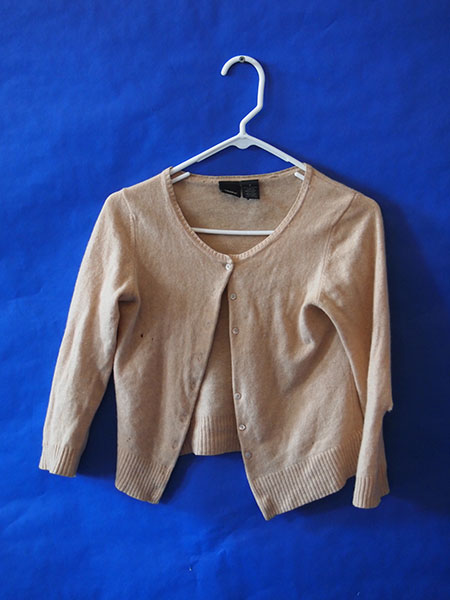![]() body | color | collections | commodity | cube | document | fabric | fetish | gender | glass | home | identity | living | machine | metal | minimal | mobility | narrative | olfactory | organic |
body | color | collections | commodity | cube | document | fabric | fetish | gender | glass | home | identity | living | machine | metal | minimal | mobility | narrative | olfactory | organic |
![]() pain | paper | plastic | plugs | power | protective | rectangular | ritual | round | sound | souvenir | spiritual | style | text-based | time | tool | touch | uniform | value | visual | warm | wood
pain | paper | plastic | plugs | power | protective | rectangular | ritual | round | sound | souvenir | spiritual | style | text-based | time | tool | touch | uniform | value | visual | warm | wood
| Clothing: Light Brown Button Up Sweater | |||
Narrative: Mossimo I received this sweather from my mother's co-worker, who was passing it on in a bag of clothes she no longer wanted. This sweater has moved with me from Brooklyn to Queens to the Waterpod to Manhattan to Brooklyn. The elbows have worn through. China has become the largest producer of raw cashmere and their clip is estimated at 10,000 metric tons per year (in hair). Mongolia produces somewhat more than 3,000 tons (2,721 tonnes) (in hair), while Afghanistan, Iran, Turkey, and other Central Asian Republics produce significant but lesser amounts. The annual world clip is estimated to be between 15,000 and 20,000 tons (13,605 and 18,140 tonnes) (in hair). "Pure cashmere", resulting from removing animal grease, dirt and coarse hairs from the fleece, is estimated at about 6,500 tons (5,895 tonnes). It is estimated that on average yearly production per goat is 150 grams (about 1/3 lb).
|
 |
||
![]()
